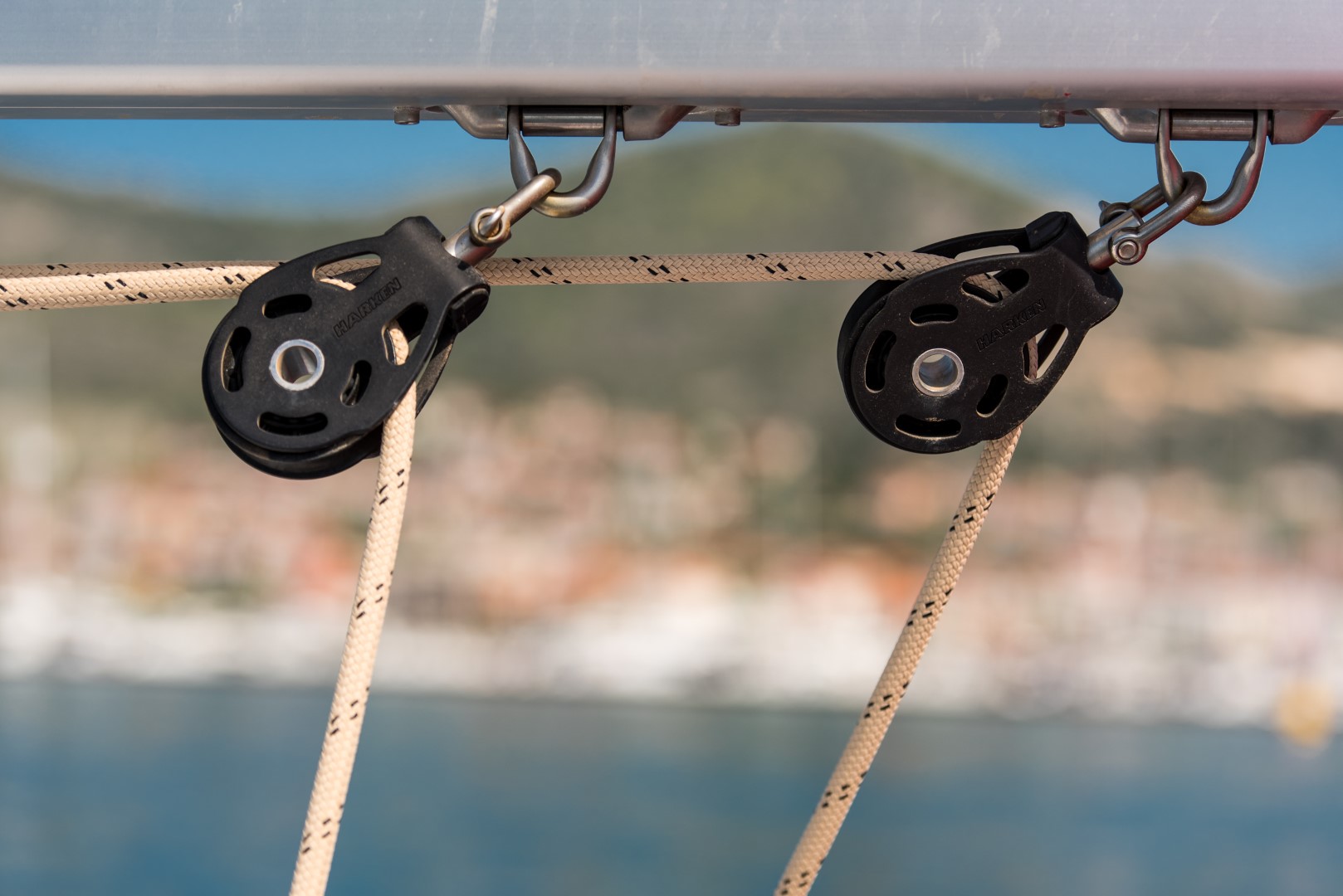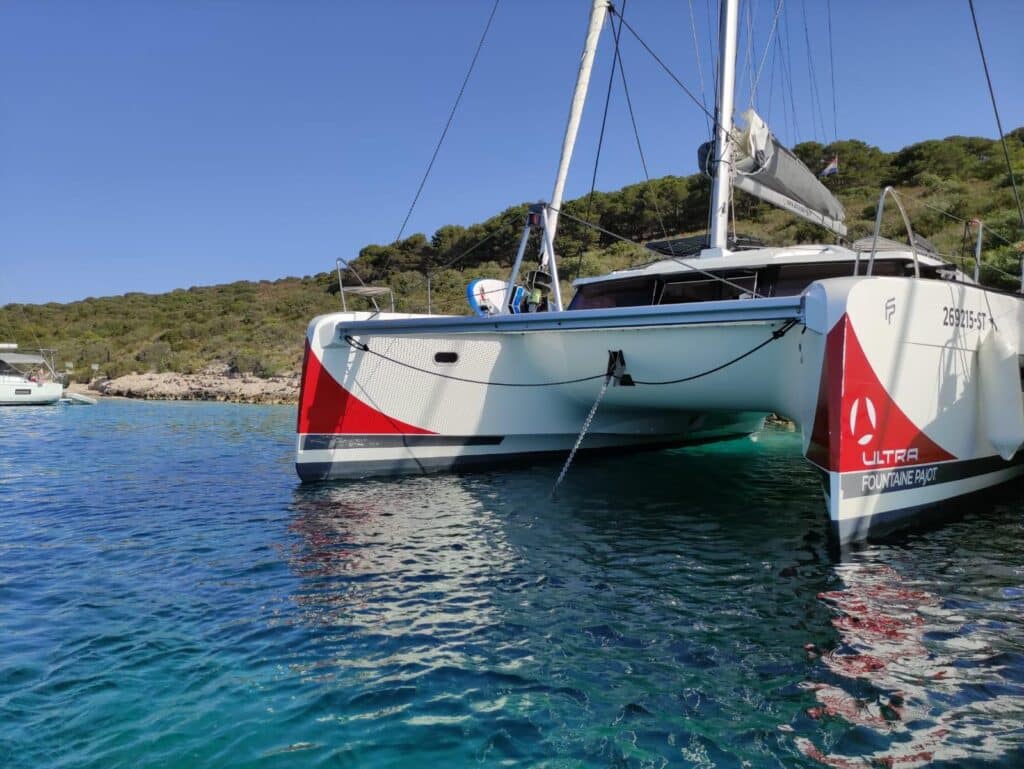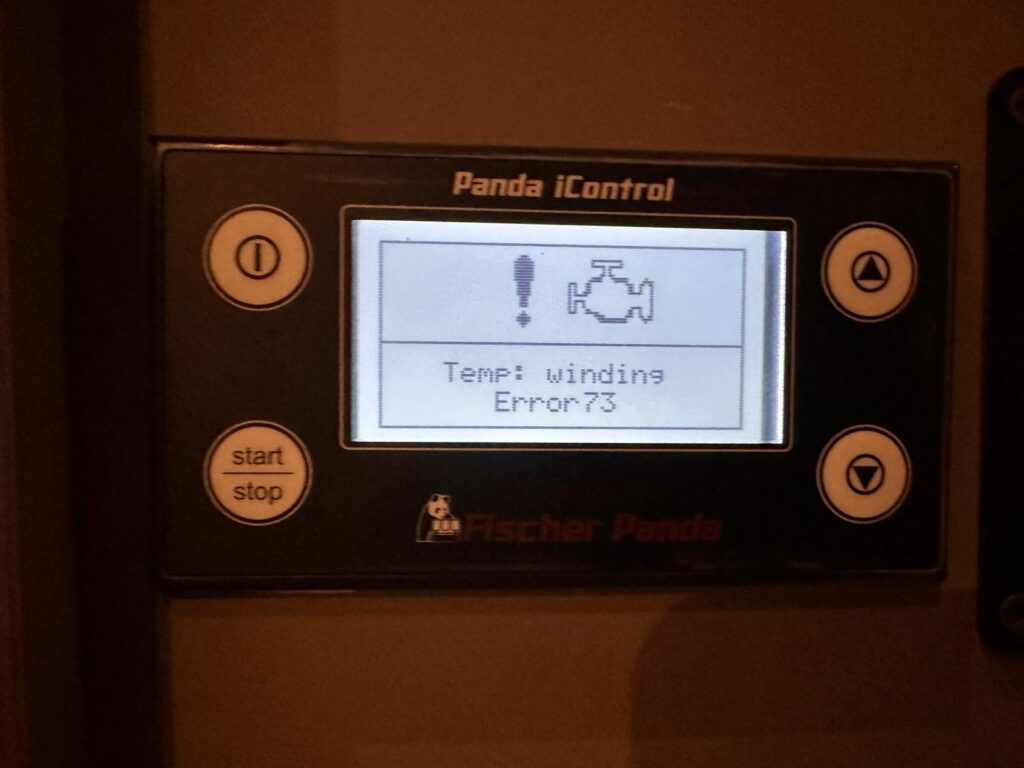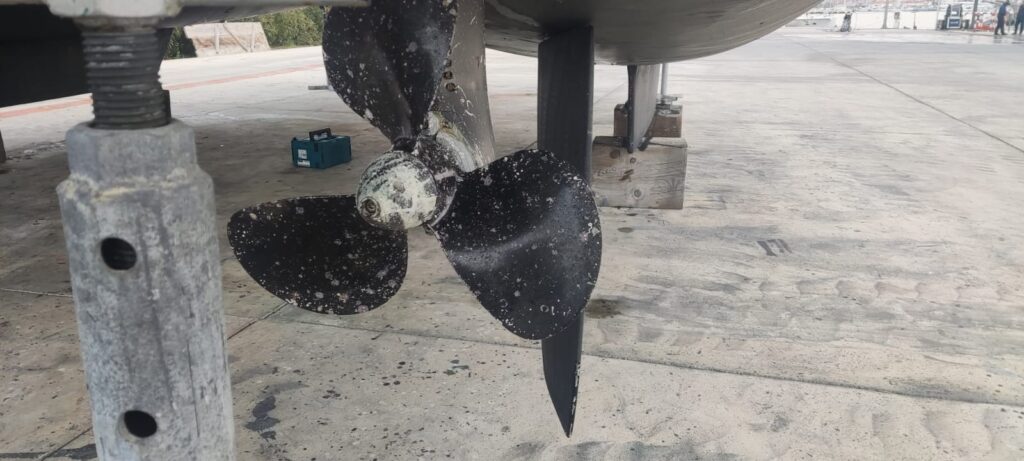
- Sailing Croatia tips
-
by Ultra Sailing Team
Chartering a yacht in Croatia is a dream holiday for many! Crystal-clear water, rich cultural heritage, stunning natural landscapes and bays, and above all, the freedom to explore at your own pace.
Croatia has one of the largest charter fleets in the world, and with so many boats and guests on the water, accidents and damages unfortunately do happen. Based on our experience, and what we’ve seen across the industry! We’ve put together a guide to help you avoid the most common issues during your yacht charter.
Before taking over the boat, all charter companies require guests to leave a security deposit. This is usually held on a credit card, paid in cash, or covered by a damage waiver insurance. Naturally, every guest hopes to return with great memories and a full refund of their deposit, but the good news is: most damages are easily preventable with a bit of awareness and care.

From what we’ve seen over the years, many guests understandably tired from their journey and excited to begin their holiday, often rush through the handover process. In that moment, it’s easy to overlook key details or miss important instructions that could help avoid problems later on.
To help you enjoy a smooth, stress-free sailing experience (and keep your deposit safe), we’ve listed the most frequent types of damage we come across during charters, and how you can avoid them. Before you set off, don’t forget to check out our Guide for the Handover of the Boat with useful tips on what to focus on when taking over your yacht.
Blocked toilets and holding tanks
This is, without a doubt, one of the most common and avoidable problems during a yacht charter, and yet it still happens more often than you’d expect.
Blocked toilets are a frequent issue in the charter business, mostly because guests are unaware of how different marine toilet systems are compared to the ones at home. After a few days onboard, people often fall into routines and forget that even flushing toilet paper can cause serious problems on a boat.
The golden rule: absolutely nothing but human waste should go down the toilet. That means no toilet paper, wet wipes, tissues, cotton pads, or hygiene products. All of these can block the pipes and damage the entire toilet system.



Every bathroom on board is equipped with a small waste bin. Please use it for all disposable items, including toilet paper. Dispose of the bin daily if needed, using the supplied bags.
Also, always flush with plenty of water – ideally two to three times, and make sure to empty the black water tank before returning the boat to base.
A blocked toilet can lead to unpleasant smells, inconvenience for the crew, and potentially expensive repairs, all of which are easily avoided with a bit of extra care. The same applies to the holding tanks: even if toilet paper doesn’t block the toilet itself, it can clog the holding tank, making it impossible to empty. This can lead to unpleasant smells on board and potentially costly repairs.
Deck Windows (Hatches)
Hatches might seem sturdy, but they’re surprisingly vulnerable, and among the more common sources of damage we see on charter boats.
One of the biggest mistakes is stepping on the hatch covers, especially near the corners. Even though it may seem harmless, the pressure can easily cause them to crack, and it doesn’t take much for that to happen. Cracked hatches can quickly lead to leaks, water damage, and, of course, repair costs.



Another issue? Leaving hatches open while sailing. A sudden gust of wind or a wave can slam them shut with force, breaking the hinges or cracking the acrylic. If you notice a small crack or a loose seal, report it immediately to the base staff. Small issues can often be fixed on the spot and prevent bigger problems later.
Fenders and Deck cushions
It might sound like a small thing, but fenders and deck cushions often go missing during charters – and they’re not always cheap to replace.
Let’s start with the fenders. These protect your yacht from damage while moored, so they’re important. But if they’re not properly tied and secured before setting off, they can easily disappear into the sea without anyone noticing. On monohulls, there’s another thing to watch out for: never tie a fender above the exhaust outlet of the heating system, the hot air can melt or burn it over time.



Then there are the deck cushions, on the bow, flybridge, or cockpit areas. These are lightweight and exposed, and a single gust of wind is enough to lift them overboard if they’re not properly fastened. On catamarans, this can be particularly tricky because the helm is often far from the bow or flybridge, meaning you might not even realize a cushion is missing until it’s too late.
Assign someone from your crew to double-check all fenders and cushions before sailing.
Make sure cushions are securely strapped or stored when not in use. Avoid leaving fenders hanging while underway, unless needed, and always check they’re firmly tied.
Anchor & Windlass damage
The anchor windlass is one of the most important and expensive pieces of equipment on board. Unfortunately, it’s also one of the most commonly misused, which can lead to serious damage or even losing the anchor completely.
After dropping anchor, many guests forget to secure the chain properly. If you don’t tighten the brake on the windlass or use a snubber line (a rope to relieve tension), all the strain from the boat’s movement stays on the windlass. Over time, this can damage the gearbox.



Another issue happens when the chain is let out mechanically and not monitored closely. If it runs all the way out without stopping, it can reach the end (usually tied with a rope), which may snap, causing the entire chain and anchor to drop to the seabed.
You should also be careful when choosing your anchoring spot. Never anchor in water deeper than you can dive, as anchors can sometimes get stuck on the seabed. If that happens at great depth, you’ll likely need to call a professional diver to retrieve it.
As a general rule, for safe anchoring, always drop a chain length that’s at least three times the depth of the water. This ensures better holding and puts less strain on the equipment. Also, never use the windlass to pull the boat forward, it’s not made for that. Always approach slowly, make sure the boat is above the anchor, and retrieve it gently.
Bow Thruster (Monohulls)
Bow thrusters are incredibly helpful when maneuvering in tight spaces like marinas – especially on monohulls. But if used incorrectly, they can easily get damaged.
Catamarans typically don’t have bow thrusters, so this applies mainly to monohull charters.
The most common mistake? Holding the bow thruster button for too long. It’s designed for short bursts, just a few seconds at a time. If you keep it engaged too long, the system can overheat, causing the fuse to blow or, worse, burning out the motor. During the handover, our team will show you exactly where the fuse is, just in case.
Another key point: be mindful of what’s around the bow thruster. Don’t activate it if there’s a mooring line or a floating rope nearby, especially while picking up or releasing moorings, or when maneuvering close to buoys. Something getting sucked into the thruster can cause serious mechanical damage.
Quick tips for safe use:
- Use short, controlled bursts only.
- Avoid using the bow thruster continuously or for long stretches.
- Check the area around the bow before activating it.
Ask during check-in to be shown the location of the bow thruster fuse.
Mainsail, Genoa & Gennaker Damage
Sails are at the heart of your sailing adventure, but also one of the most expensive things to damage. Most issues come from small mistakes during setting or furling, so a bit of attention goes a long way.
Mainsail
One of the most common problems is the sail getting stuck or jammed when furling in or out. This often happens if the furling line isn’t handled correctly or if the locking lever on the winch isn’t in the right position. Always make sure you understand how your furling system works before setting sai, our team will gladly show you during check-in.
If your boat has a soft shackle for hoisting the sail, double-check it’s properly secured to the mast hook, if not, it can jam or even tear the sail.



Also, remember to reef in time when wind picks up. Many sail damages happen because sailors wait too long to reduce sail area.
Genoa
A common mistake is letting the halyard get too loose. If that happens, it can wrap around the forestay when furling or unfurling, potentially damaging the furler or in extreme cases, putting dangerous strain on the rig.
When furling in the genoa:
- Keep light tension on the sheet to avoid tangling.
- Never use a winch to force the sail in or out –
- Always furl and unfurl slowly and in control.
Gennaker The gennaker is great fun, but it’s designed for light wind only. If you’re new to sailing or if wind speeds go over 10 knots, it’s better to skip it. Overloading it can easily tear the sail or cause other damage.
Other Damages
Some damages happen quickly, often due to inattention or rushed manoeuvres. Here are a few more things in short to keep an eye on:
Generator
Avoid using the generator while sailing – the exhaust can suck in air, damaging the impeller. Use it only when anchored or on a mooring buoy.
Gelcoat damage
Happens often during mooring in harbour, especially if fenders aren’t positioned or used properly. Never push off from other boats or the dock with your hands or feet – use a fender instead. Injuries can happen in a second, and we always say: we can fix plastic, not people 😊
Propeller & sail drive damage
Watch out for floating ropes, especially when reversing in a harbour. Always shift to neutral if there’s a risk of entanglement. If something does get stuck, carefully dive and remove it, only if safe.







Cockpit shower handle
Delicate plastic parts break easily – avoid twisting, throwing it on deck or pulling it out with force.
Winch handles
Wrap the line around the winch at least four times to reduce strain. Too much pressure can snap the handle.
Dinghy & Outboard Engine
One of the most common mistakes is towing the dinghy while sailing, especially with the outboard engine still attached. While it may seem convenient, it carries real risks, a sudden wave can flip the dinghy, causing the engine to fill with water or even fall off completely. This can result in serious and costly damage.
Yacht damage doesn’t have to be part of your charter story. With a bit of attention, teamwork, and care, you can fully focus on the good stuff. Most damages we see are totally avoidable, and we’re always happy to show you how to handle everything safely during check-in.



